In June
and July, 2014, Elaine and Mike Von der Porten
embarked
on a venture to Montana. Here are some
notes
and
photos.
Day 17 -- Monday, June 30
Monday was spent just to the south of Polson.
We dropped by St. Ignacius Church which is a fresco-featured church, the first in the area based on Indian requests.
Then, we went to a Buddhist site called the “Garden of 1000 Buddahs” where 1000 Buddas surprise!) are being
put in a park-like setting.
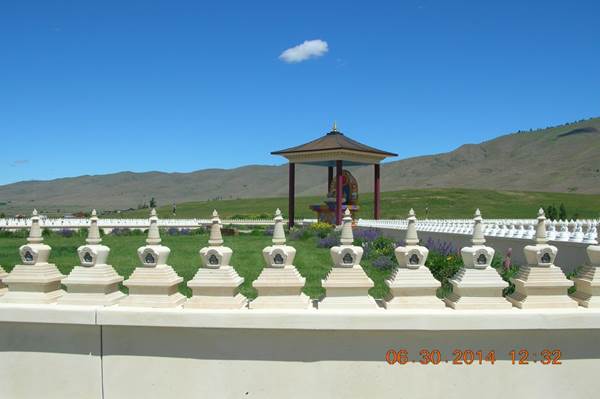
Then, on to the National Bison Range. This is a key part of the recovery of the bison. There is a 19-mile drive up and
through the range. There were great views and we saw a good number of bison.
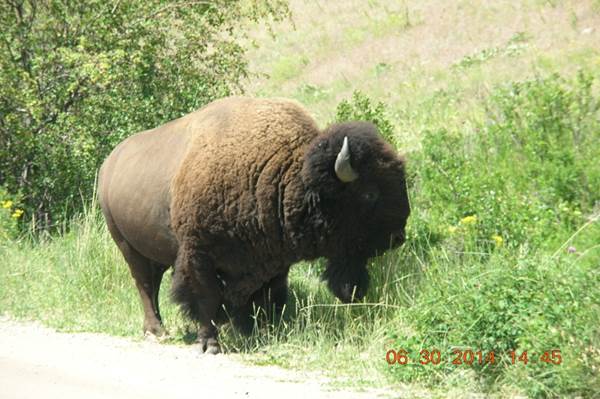
Day 18 -- Tuesday, July 1, 2014
Tuesday, we were up and out early headed to Glacier National Park. Dick had us on the Lake McDonald boat tour at the
west side of the park. The Going-to-the-Sun Road is usually open by now, but late snows didn't allow that to happen. So,
we grabbed a sandwich and made the trip around the south over to Saint Mary Lake and that boat tour. The evening found us at the Many Glacier Hotel overlooking Swiftcurrent Lake and the heart of the park.

Dinner was at the restored Hotel's Ptarmigan Restaurant - back to its 1914 appearance.
Along the road, we stopped at the lodges at Apgar and East Glacier.
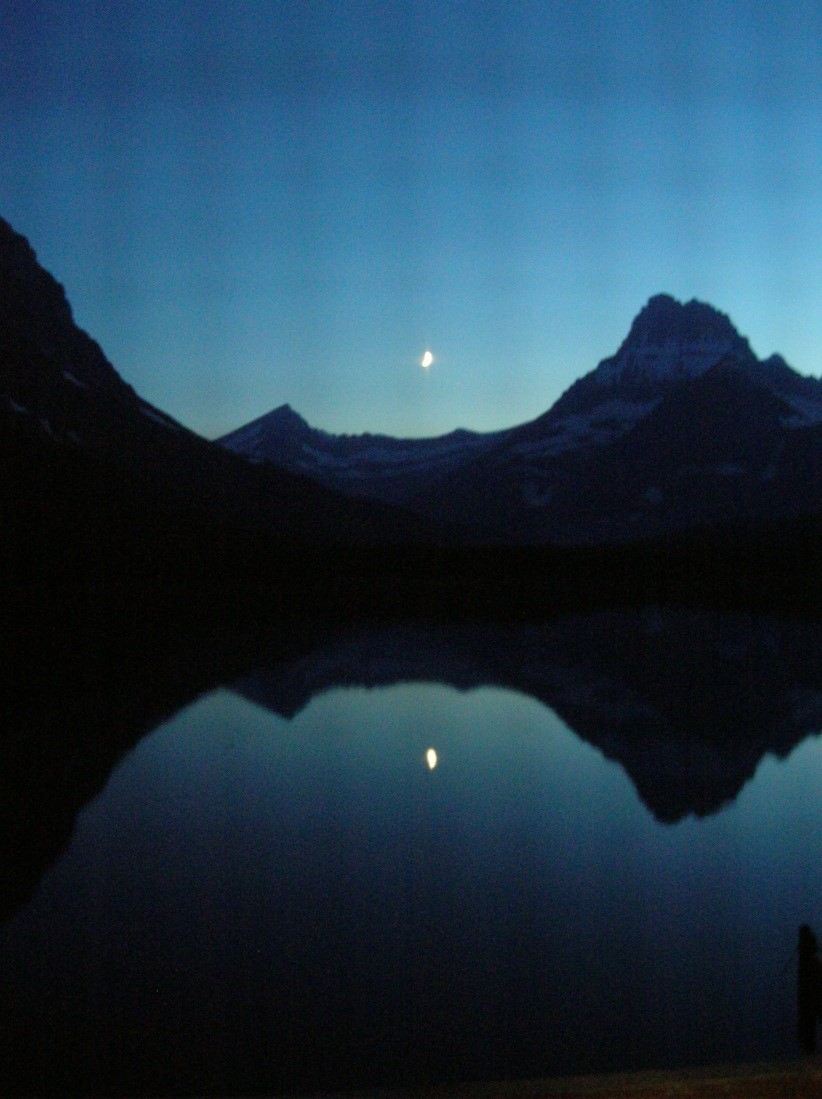
Day 19 -- Wednesday, July 2, 2014
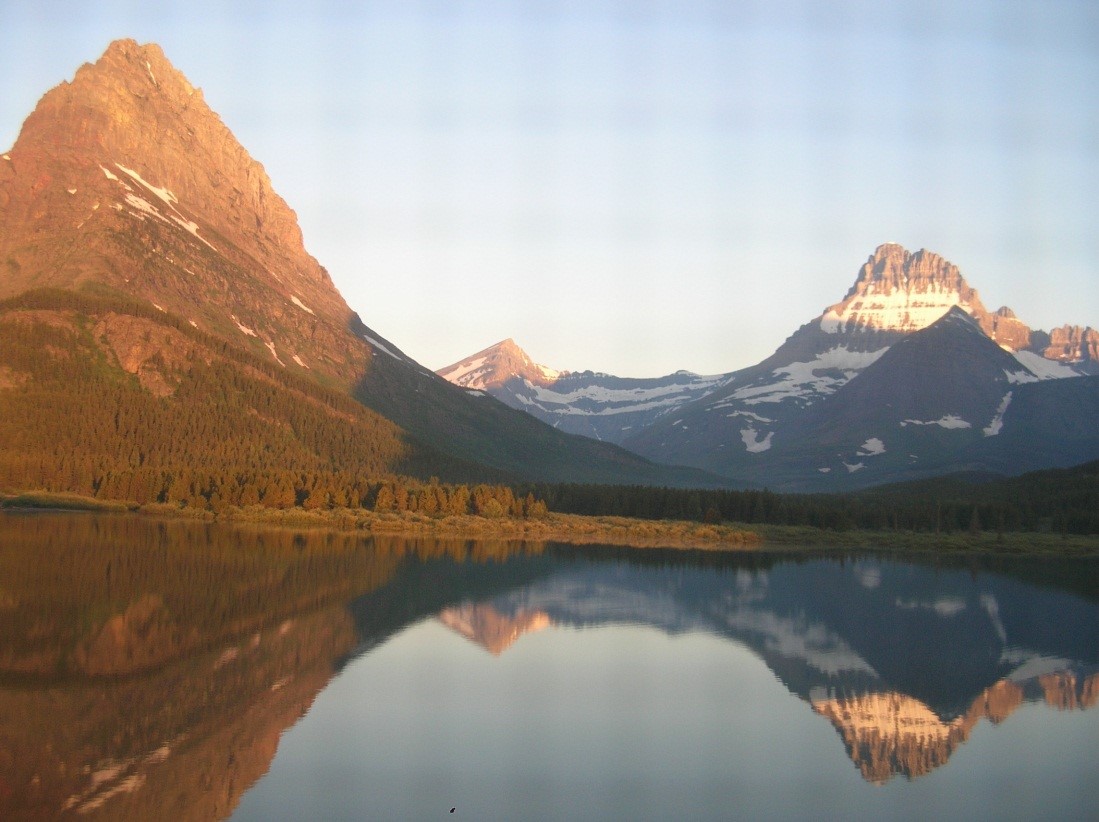
Wednesday, we caught the Swift Current Lake / Lake Josephine boat and then took a 2-hour hike up toward Grinnell Glacier. It was great to see the territory on foot.
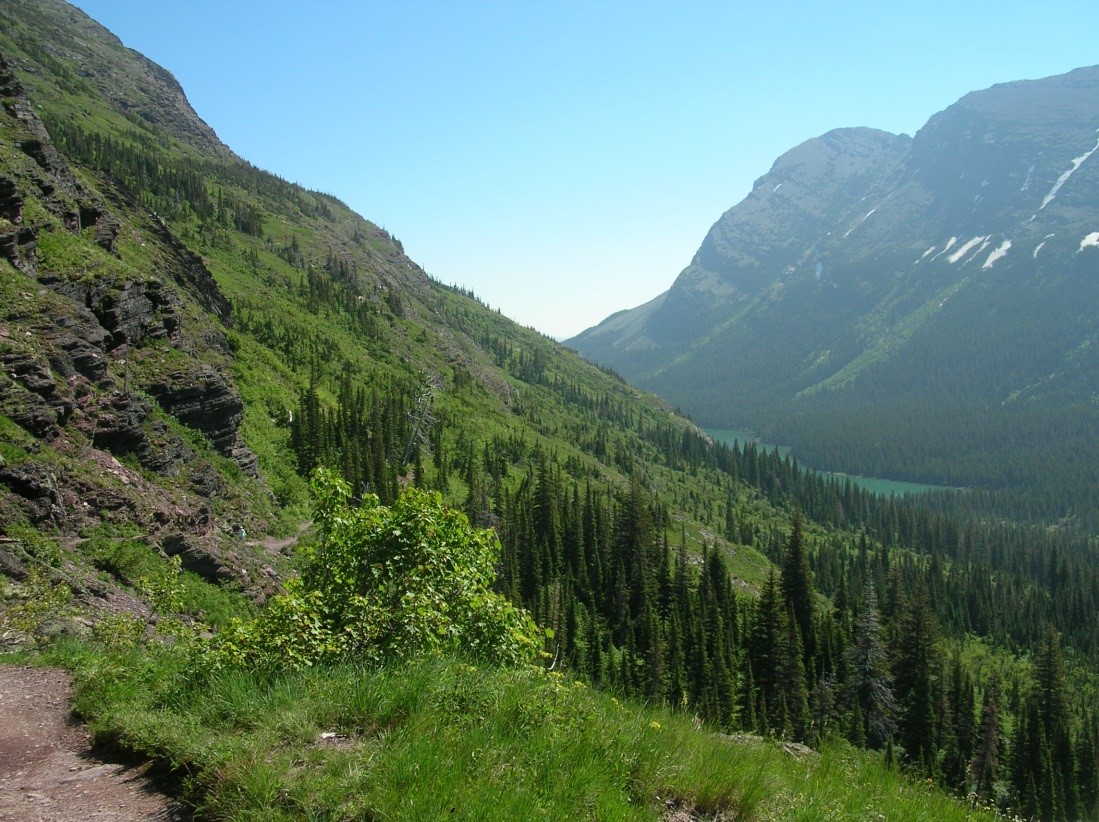
Overall Glacier NP is really quite a place. The rock is mostly sedimentary, lifted by plate tectonics (west riding over the east), so the mountains and valleys are classic glacial, but more noted by the sliding rocks. There is so much more water than in the Sierra parks.
In the park, the wildflowers were super! Heading into and out of the park, there were fields in bright yellow canola blossoms.
The expectation is that all the glaciers will be gone by 2020 or 2030.
Heading out, we stopped at the Isaak Walton Inn, the lodge built for the Great Northern Railway workers who cleared the snow for the trains during the winter and where tourists could stay the rest of the year.
We stopped by Salt Lick which is a place where the rocks have some natural salt content. Mountain goats are often seen at this site and we were lucky enough to see three of them!
We had a nice dinner at the Many Springs on Flathead Lake.
Day 20 -- Thursday July 3, 2014
Thursday took us up the west side of Flathead Lake to Kalispell.
We dropped by a local winery - a good local spot developing a tourist following, but the vineyards were so sad – three killing frosts this last year had left very few vines alive. There is an osprey nest nearby, too.
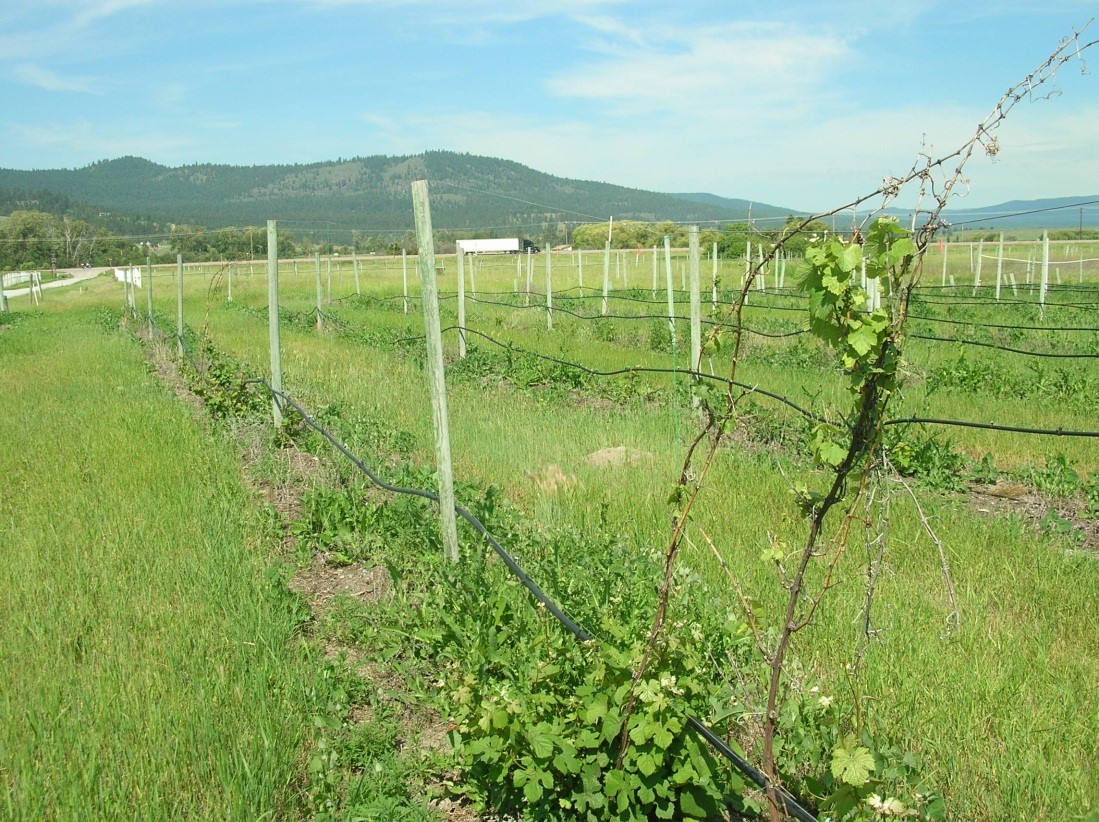
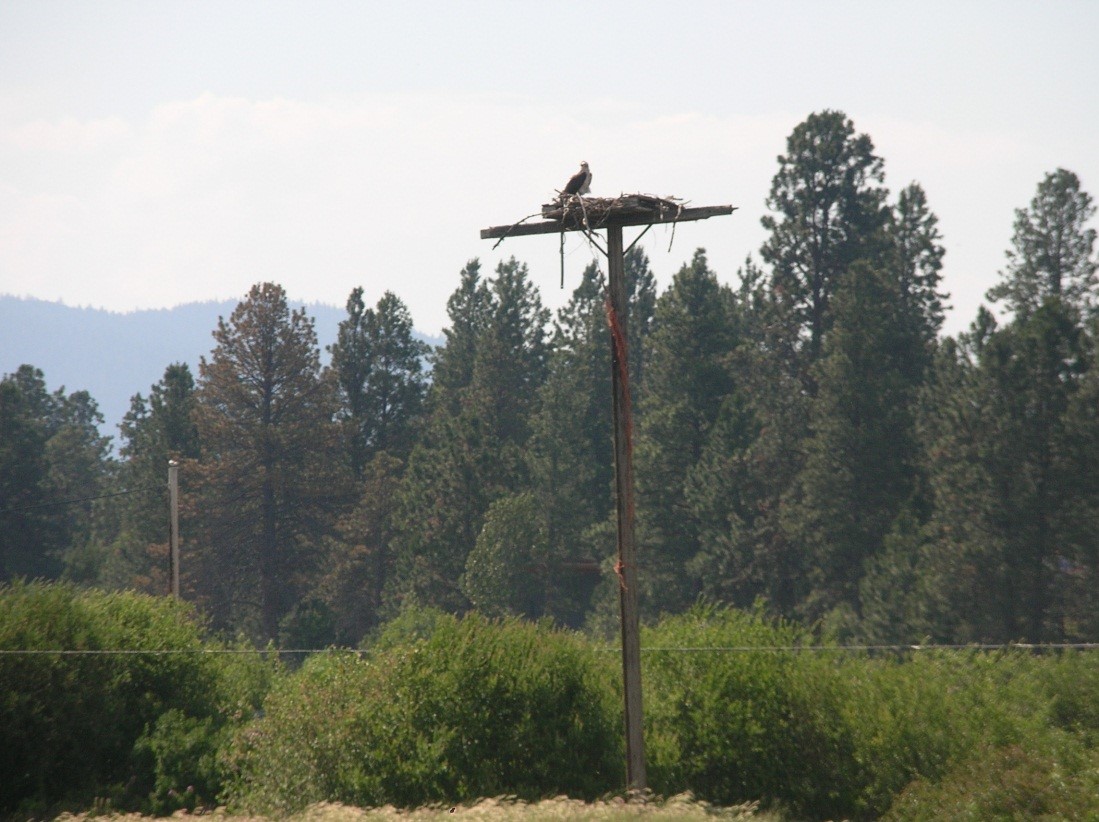
Up in Kalispell, we visited the Conrad House Museum, a very large old home built by one of the founders of the town.
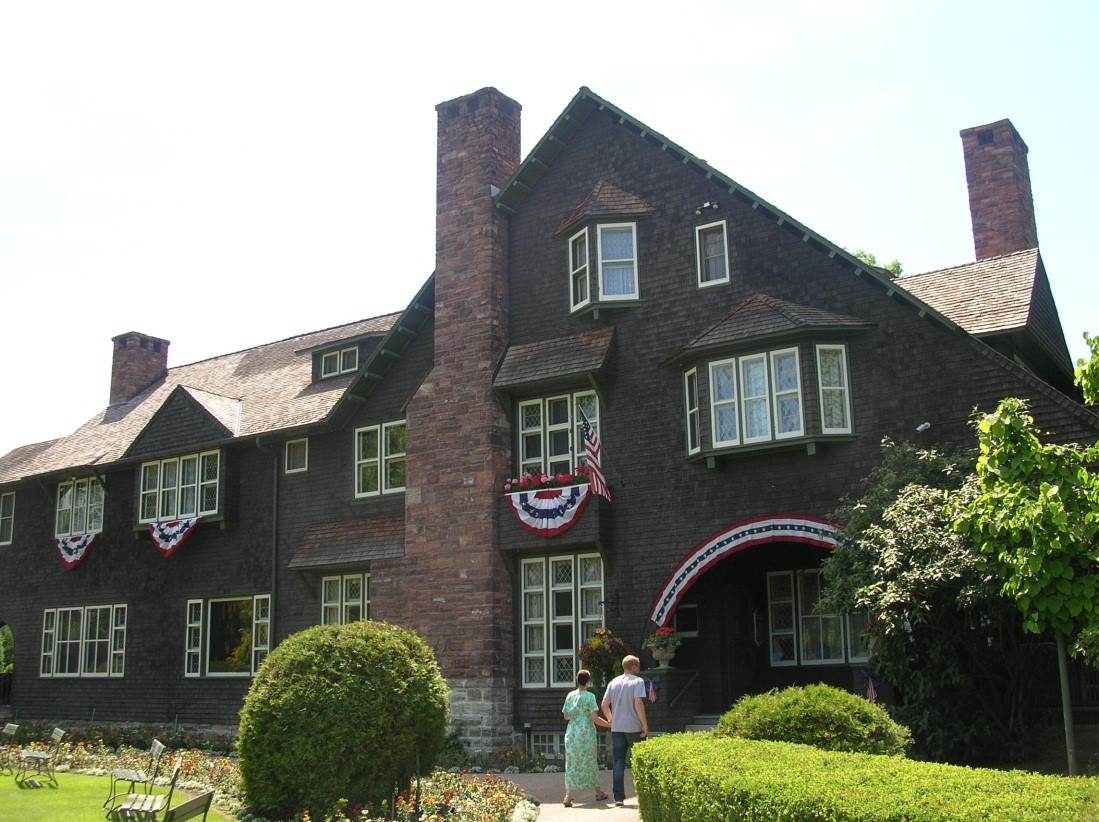
It's a big three-story place with many interesting features. It's a guided tour that takes nearly 1-1/2 hours. One of the
curators put costumed manikins in many of the rooms and then described how these matched what is seen
on Downton Abbey on PBS.
We also went to the Hockaday Museum of Ar s which focuses on historic Montana and Glacier National Park art.
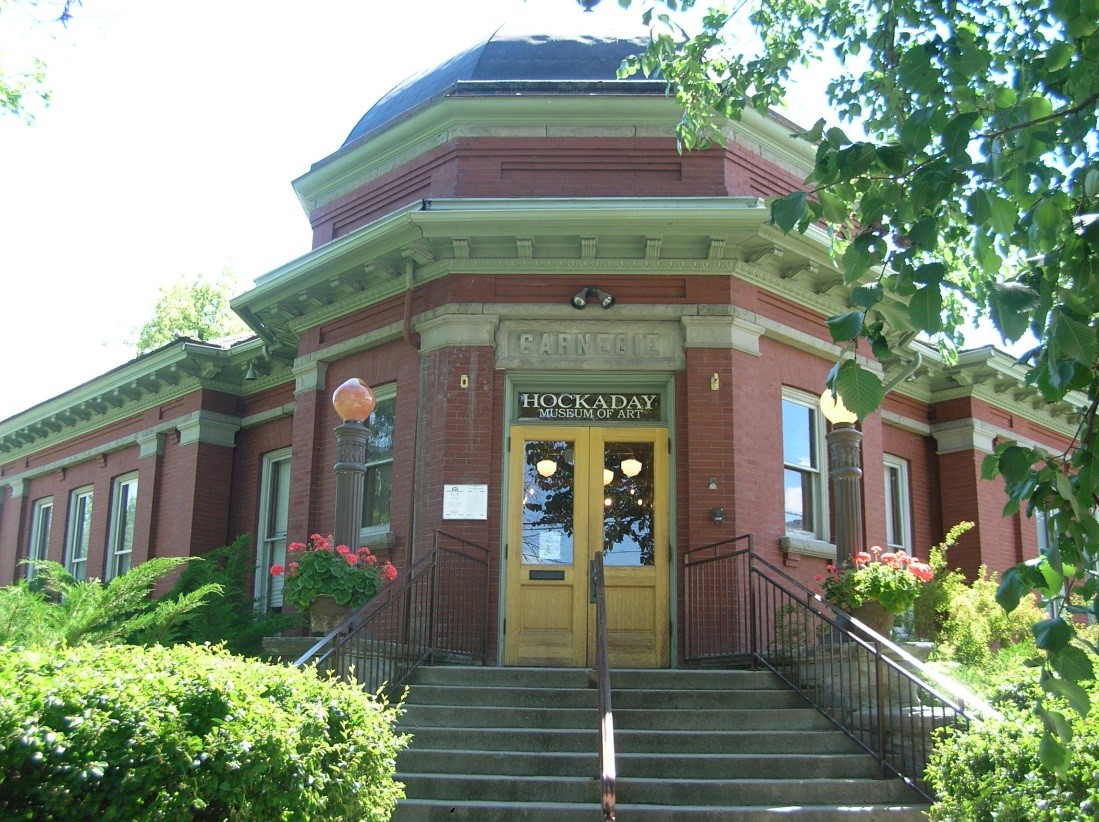
Russell, Seltzer, Powell and many others. The museum effectively uses the old Carnegie Library.
A visit to the downtown area was fun, but the temperatures, for the first time this trip, started getting uncomfortable.
In the evening, we could see fireworks around the southern end of Flathead Lake. Here, they sell real fireworks
launched in 2-1/2" and 3"tubes, so they're like what are used at minor league fireworks shows.
Friday is 4th of July in Polson.
Day 21 -- July 4, 2014
Friday found us around Polson for the 4th of July.
The community parade is nearly 60 entries, running nearly an hour. Much candy for the kids, local
politicians, local businesses, etc. The parade started at noon, so a bit later than we've seen elsewhere.
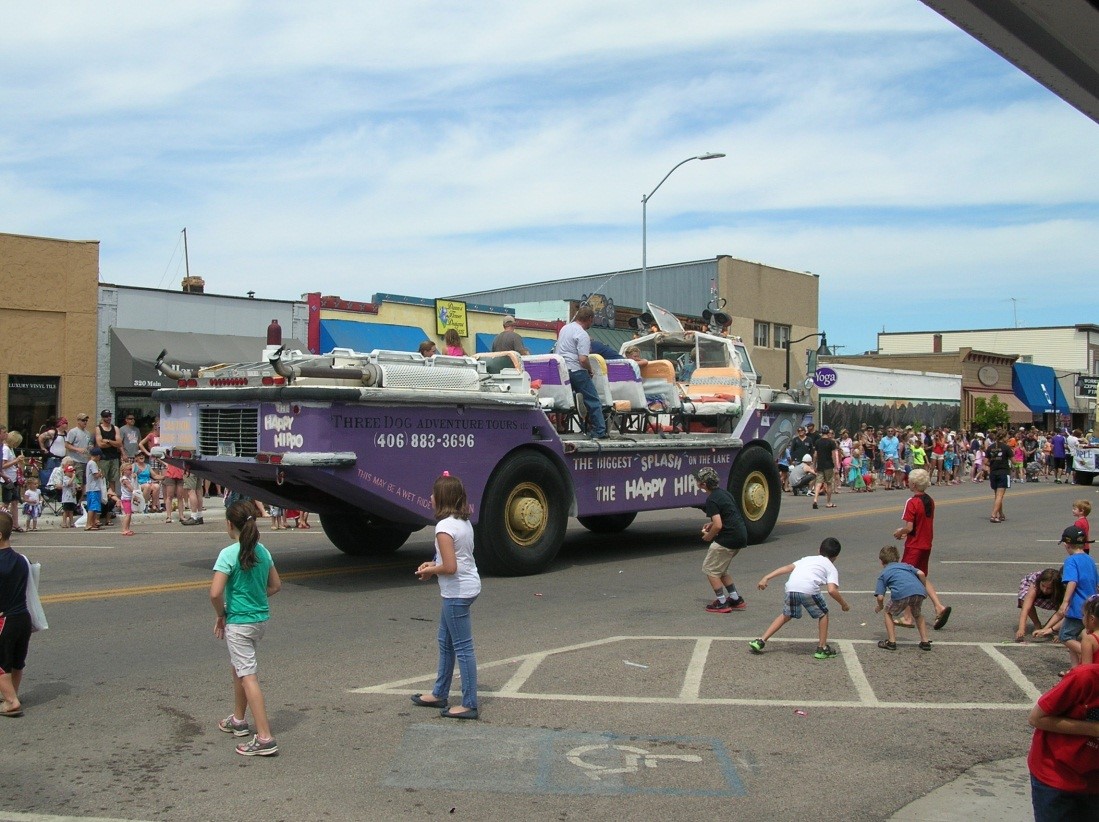
Afterwards, the local historical museum had an open house with ice cream!
In the afternoon, we went over to Dick's friends Lew and Irene's boathouse and a ride out on Flathead Lake.
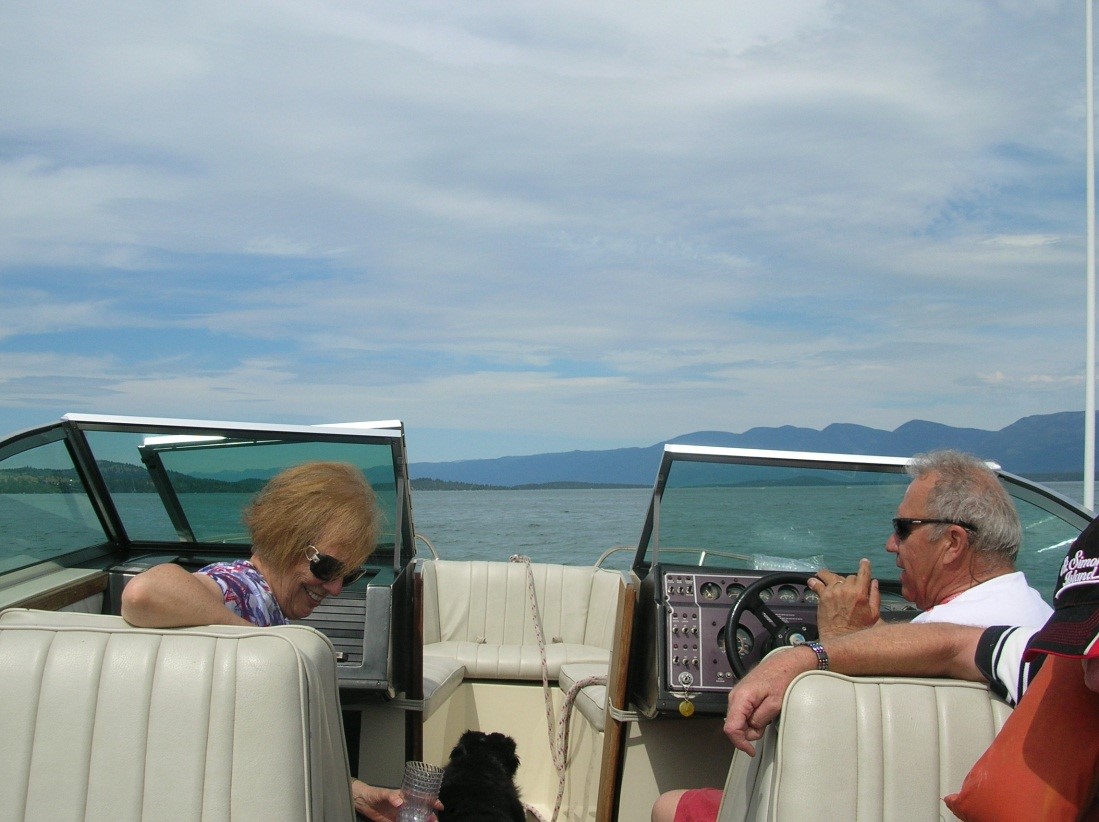
We headed south to the Narrows and Lew provided nice geological and historic commentary.
Several of Lew and Irene's friends came over for a barbeque.
We then headed to the lakefront park at Polson where Rob Quist and the Mission Mountain Wood Band was playing.
The band was situated on a barge offshore with nearly 100 small boats around. I estimated the crowd at 2,000, so a good turnout.
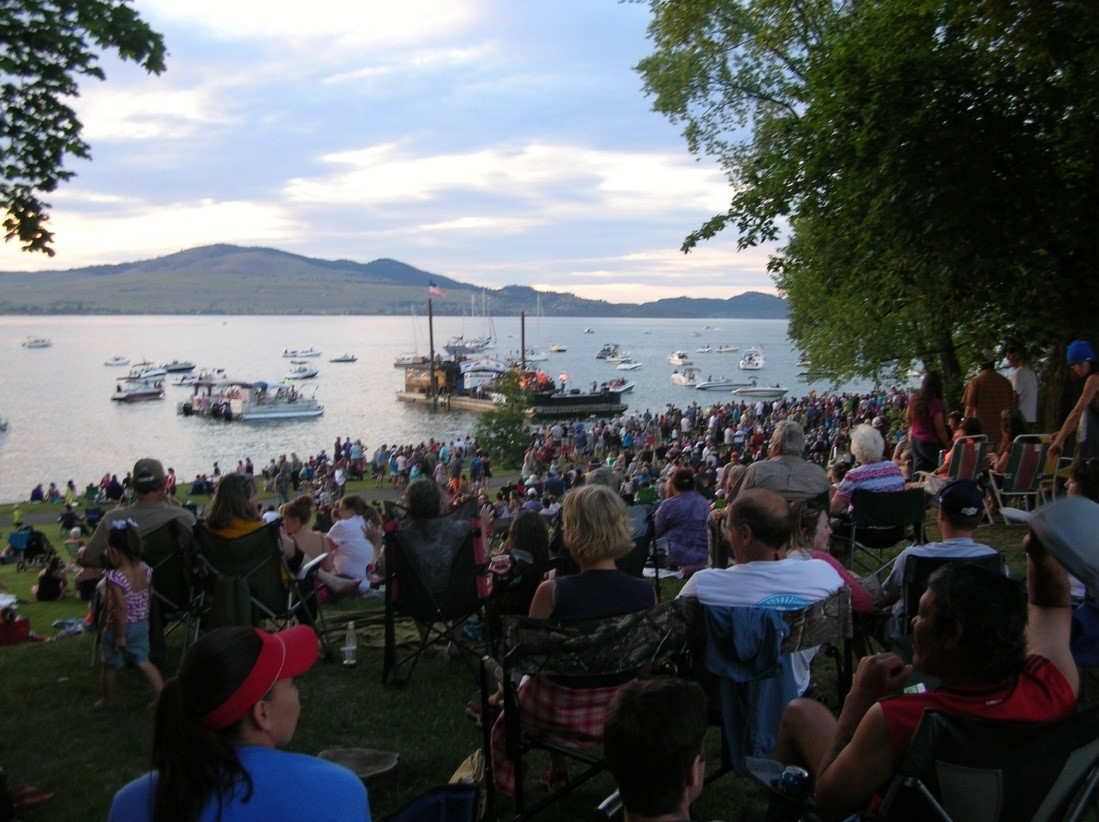
The community fireworks afterwards were "OK," but the continuing fireworks all around were amazing.
Yes, a 3" shell directly overhead is more impressive than a 6" shell at a mile distance!
Around Polson, you'll find many very large hanging baskets of flowers. They are quite remarkable.
Day 22 -- Saturday, July 5, 2014
Saturday we visited Bigfork, MT and joined Dick and friends Jim and Barbara (who visited Napa / Sonoma with us a couple of years ago) for a seafood gathering.
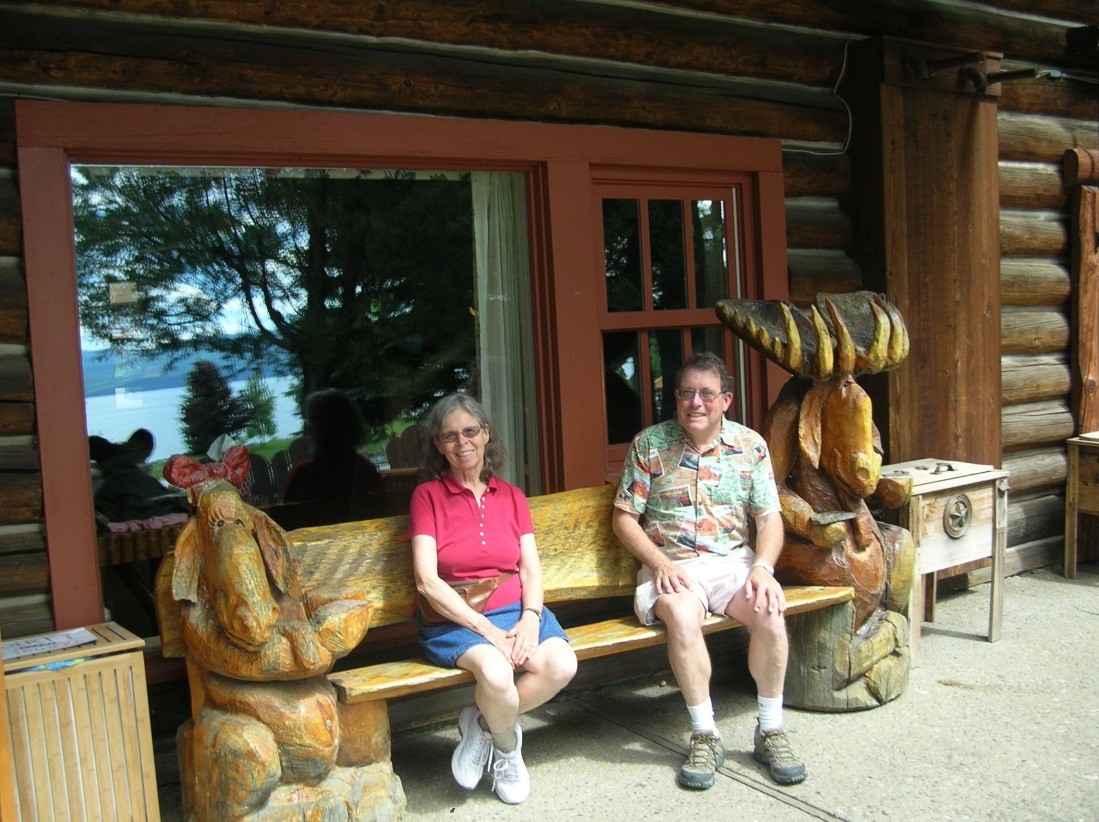
Then we headed off to Whitefish for the train. The train was on time in Whitefish and ahead of schedule getting into Portland! The recent history on that hasn't been so good, so this must be the miracle train!
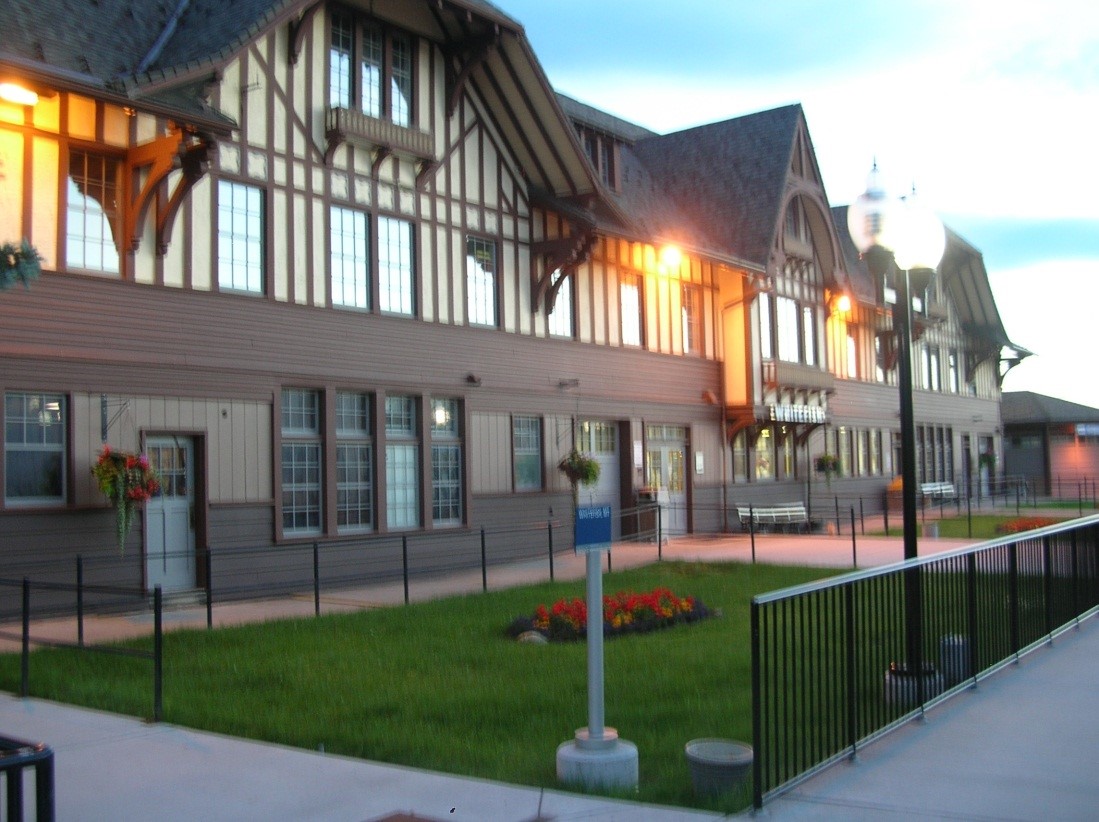
Overnight the train was fine. There’s so much more room than on a plane! The ride was surprisingly smooth. Many, many freight trains out there! Spokane (still in the dark) was the split point where our train (#27) headed south and train #7 headed north to Seattle.
Day 23 - Sunday, July 6, 2014
The daylight hours of Sunday, July 6 put us along the Columbia River on the north side. Here we traveled in three hours
what took days on the riverboat a decade ago when we took the Empress of the North cruise.
Heading toward Portland, Mt. Hood was a prominent landmark.
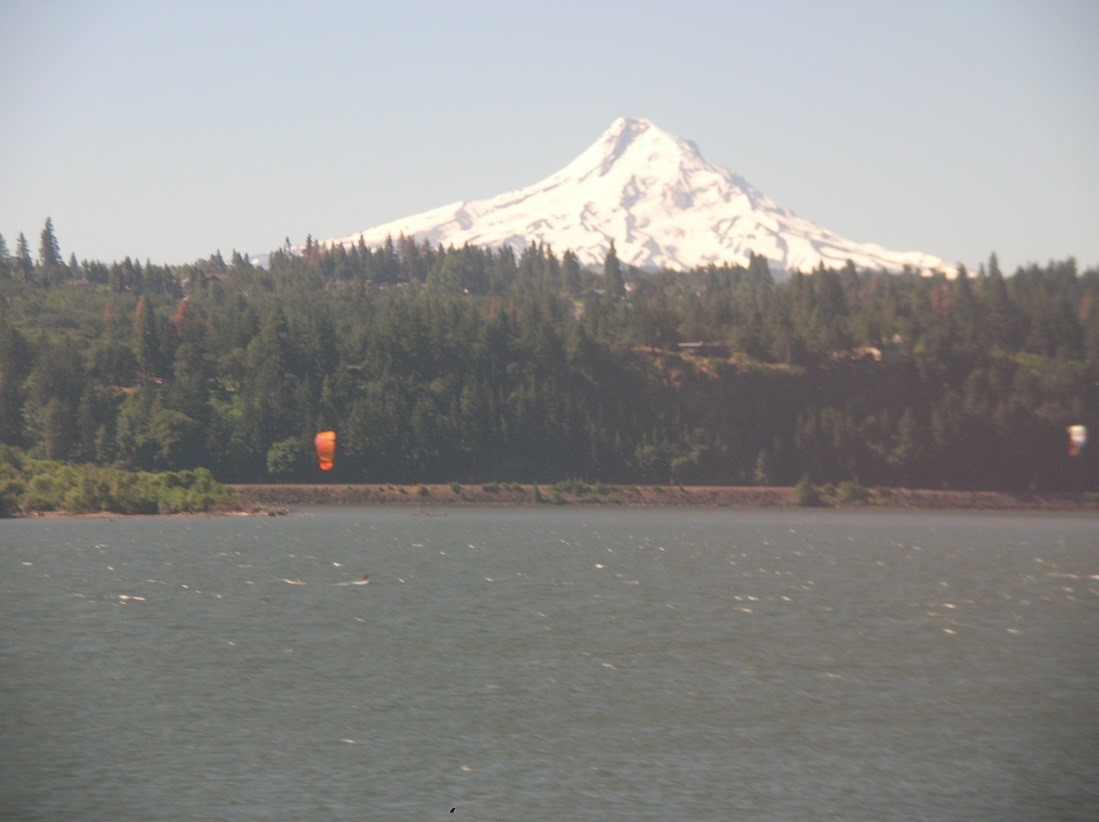
In Portland, we walked across the Broadway Bridge to get to the hotel. From there, we figured out the streetcar system and took one (CL line) down to the Oregon History Museum and Store.
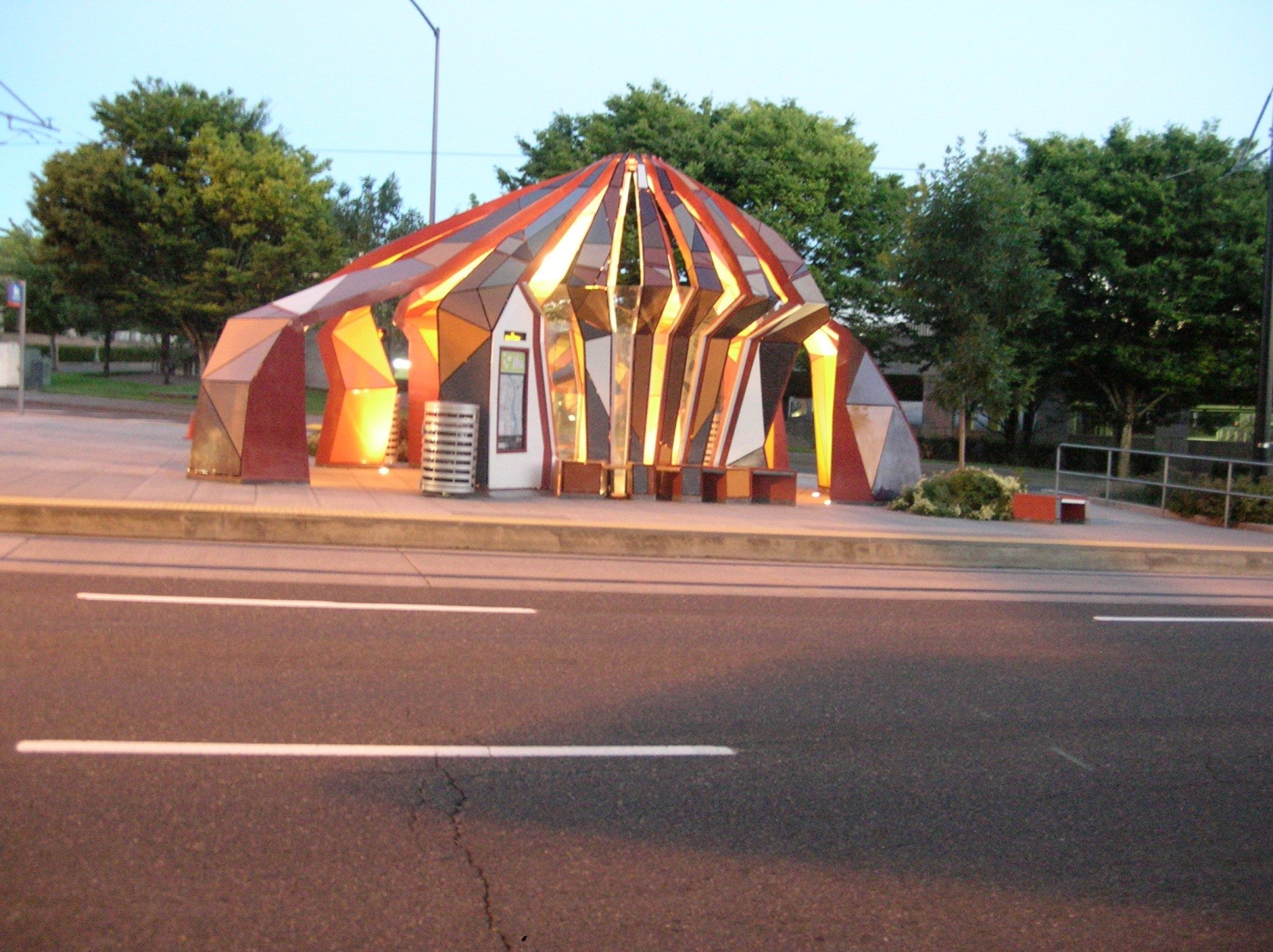
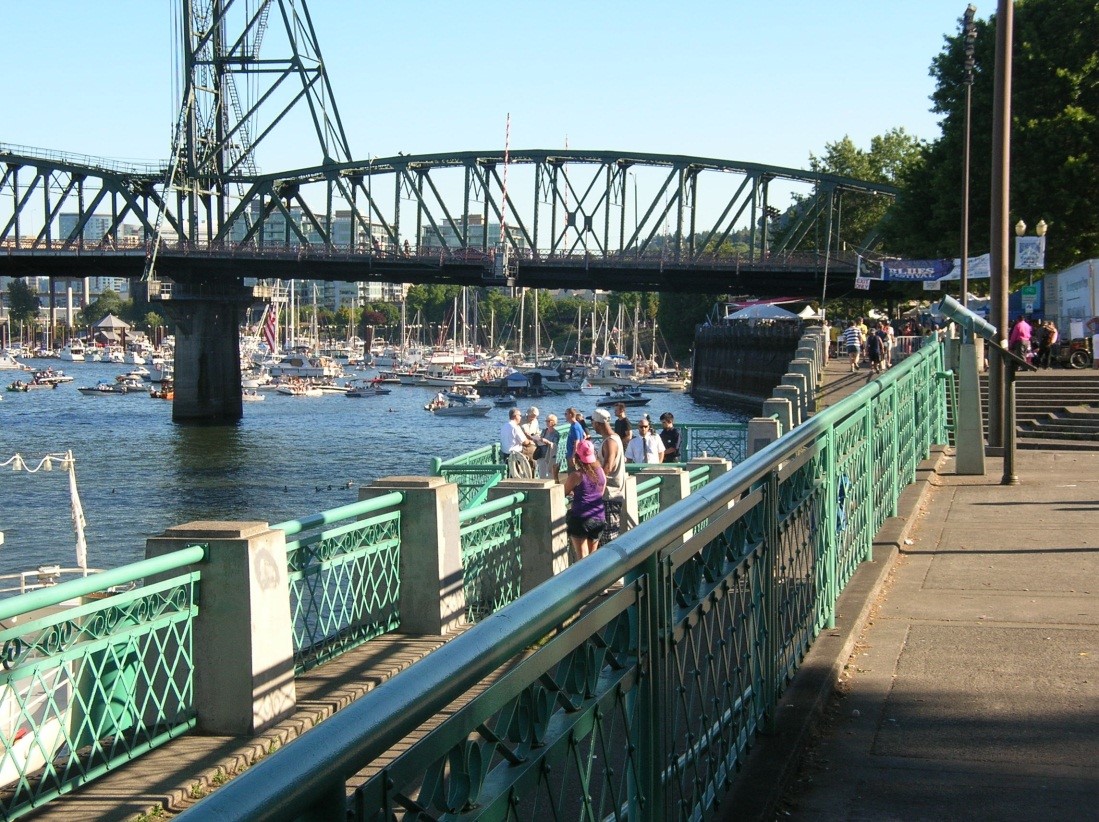
The key exhibits were a special exhibit about Lincoln from the Emancipation Proclimation to this death, the general history of Oregon (no mention of Drake), dredging the Columbia River and Oregon's wine industry.
We walked a good part of Portland including the waterfront and took a round-about streetcar trip back.
Day 24 – Monday, July 7, 2014
We took the streetcar on the east side south to its terminus. We checked the site of the railroad museum – knowing
it was not open. Then we went into OMSI (Oregon Museum of Science and Industry), but didn’t get to see the
exhibits. They also have a diesel WW II submarine.
We walked the east side river walk up quite a number of blocks, then a few blocks east to catch the streetcar again.
The city is great for walking and biking. What did surprise us was the amount of smoking – outside restaurants, in the parks, etc.
We picked up our bags at the hotel and caught the streetcar toward Union Station. It’s a quick, easy, level walk to the station. The train (as usual for us) was on time.
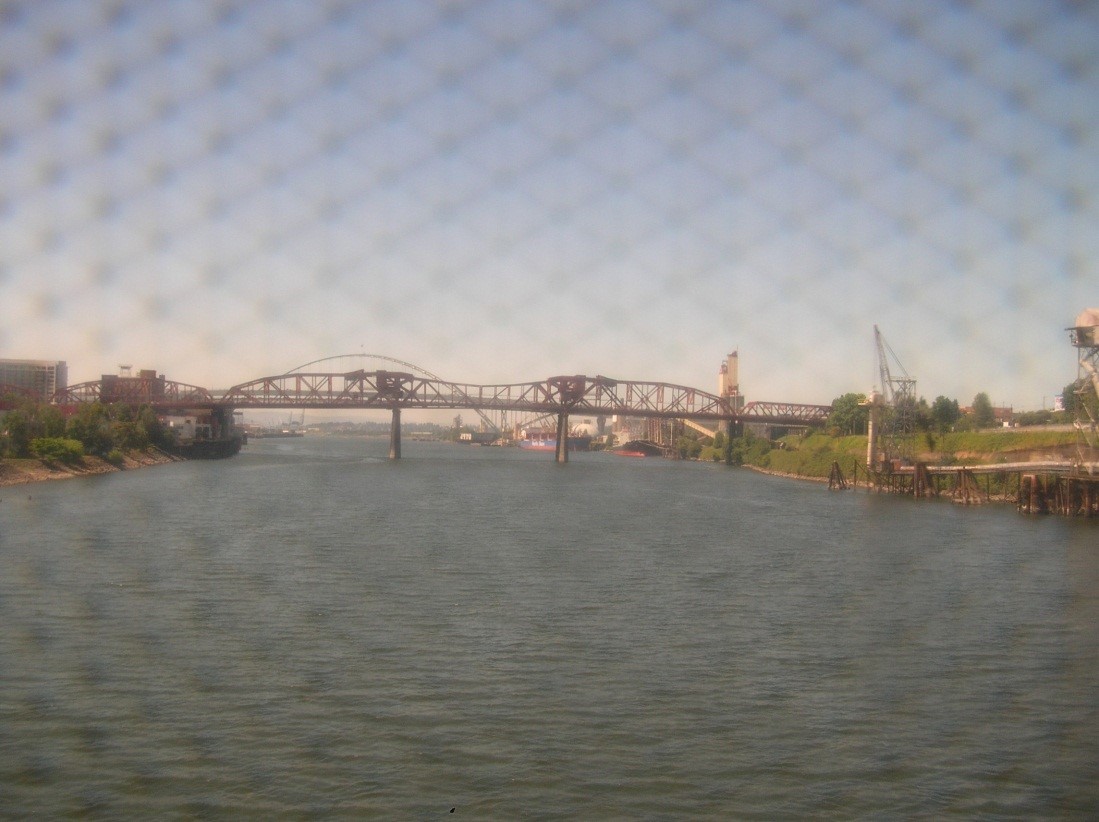
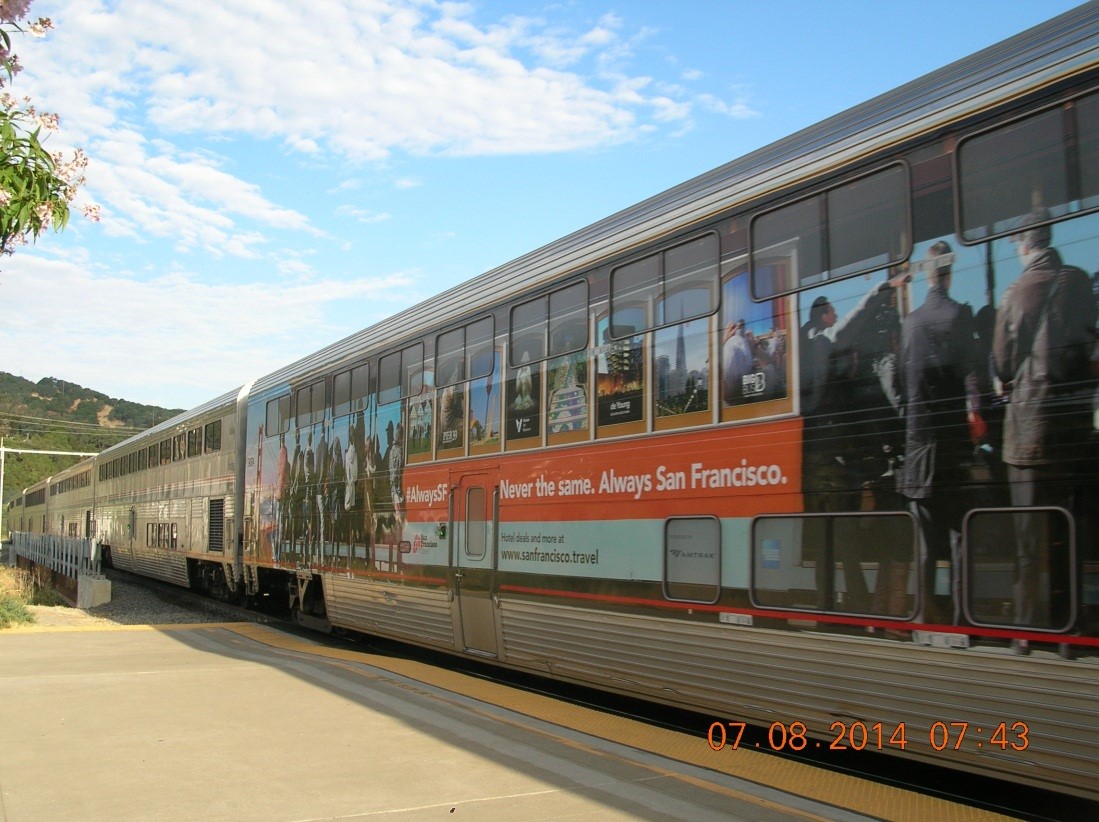
Heading south through Salem, Eugene and then east to Chemult is quite pretty and is traversed during the afternoon
hours.
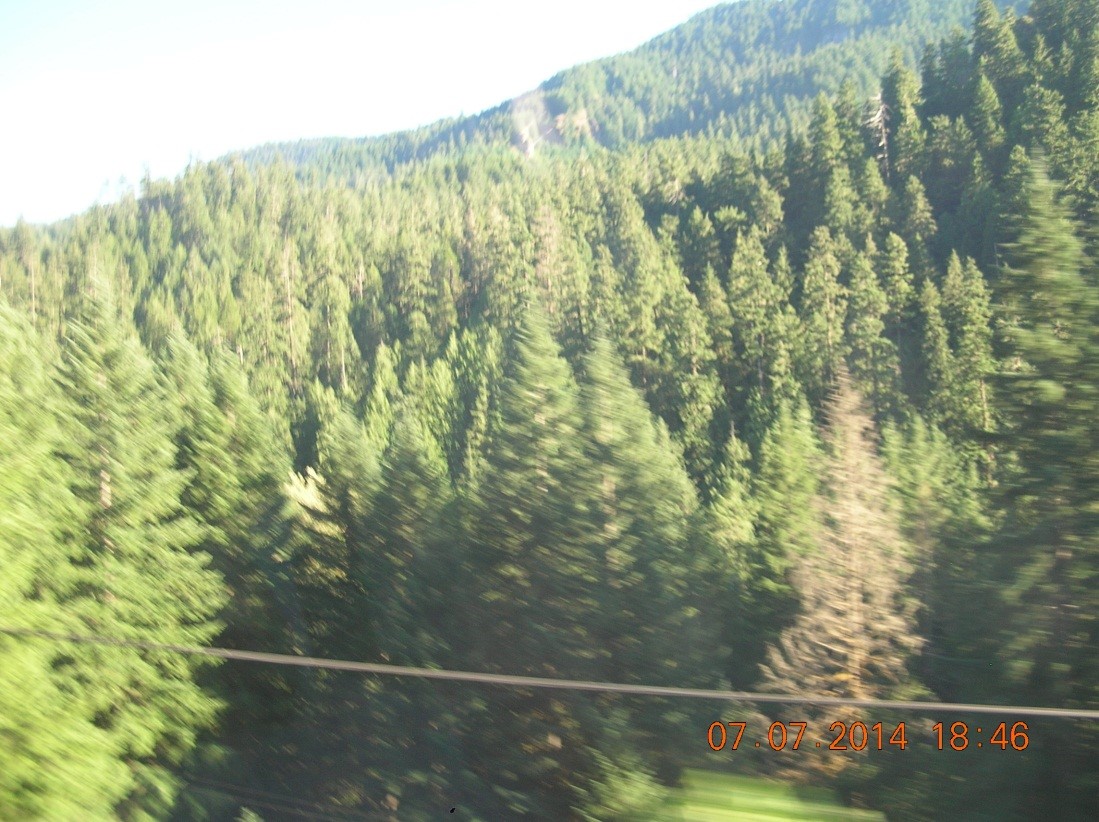
Amtrak has 120 V power available at every seat, but wireless is not yet provided. As we traveled, I could refresh the“available networks.” Even in small communities, scores of networks were available (but secured). If you want to get away from this “radiation,” you’ll have to work hard these days to find such a place.
Day 25 - Tuesday, July 8, 2014
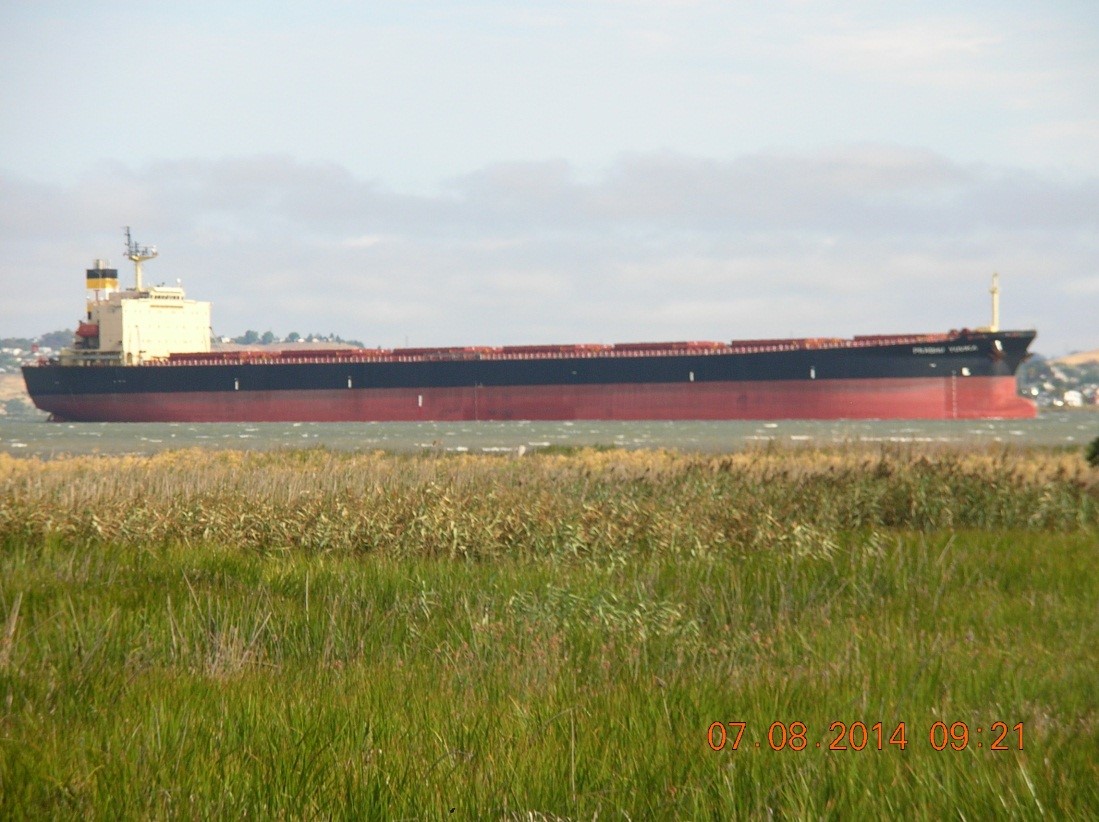
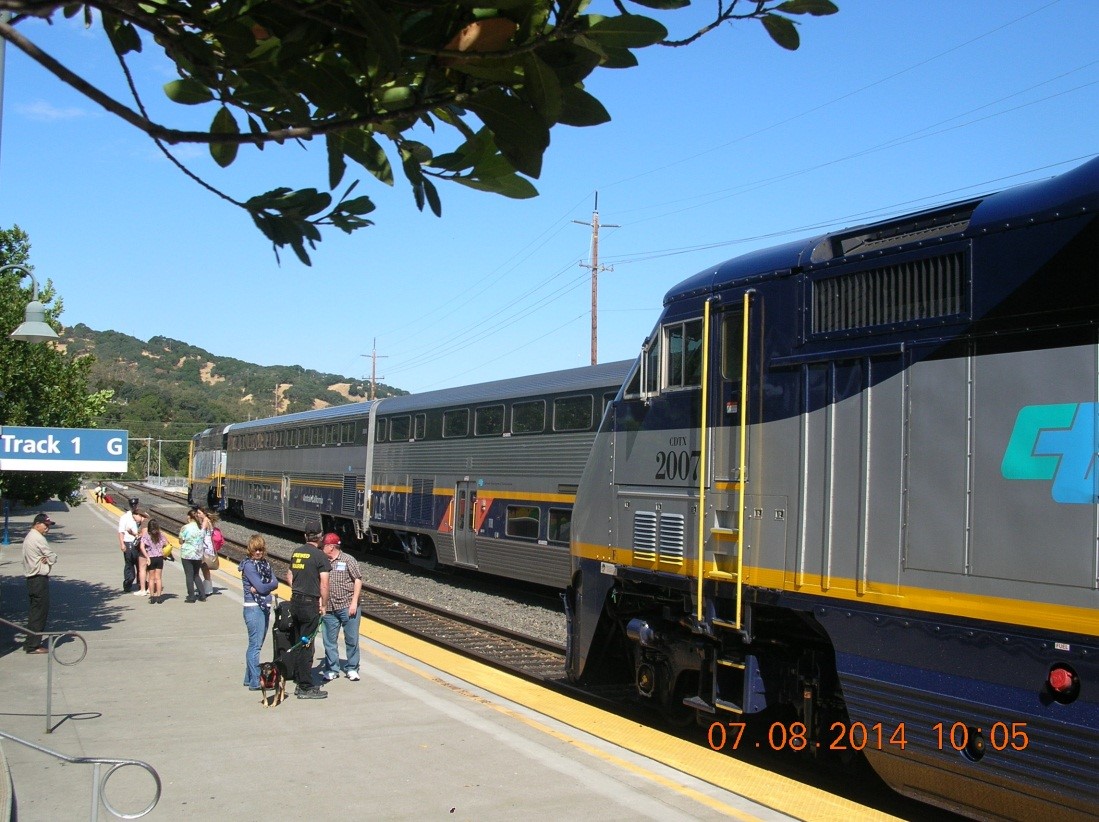
© Michael Von der Porten All Rights Reserved